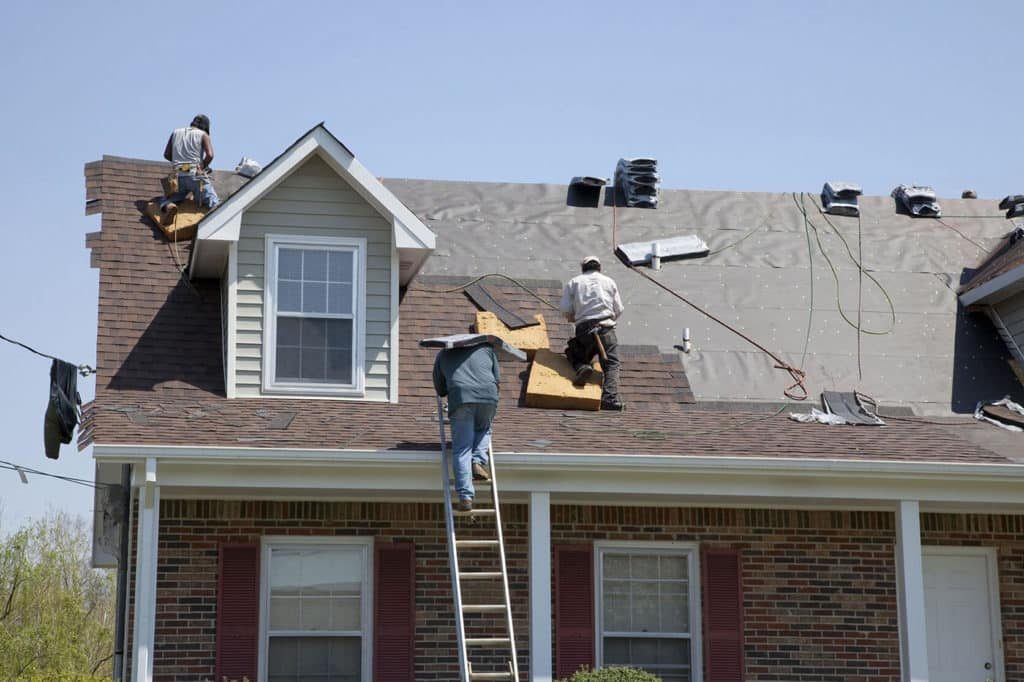Just How to Review Different Roof Options for Your Building Demands
Assessing roofing options for your structure requires an extensive technique that considers different elements such as the meant use of the framework, neighborhood climate problems, and material characteristics - Roofer. It is crucial to consider the advantages and disadvantages of various roofing types, from asphalt tiles to metal and clay ceramic tiles, while additionally factoring in preliminary expenses and long-lasting upkeep.
Analyzing Your Structure's Needs
To properly evaluate roof options, start by completely assessing your building's requirements. Begin by thinking about the structure's meant usage, as different frameworks might necessitate differing roofing specifications. Domestic roofing systems commonly prioritize appearances and insulation, while commercial buildings may concentrate on durability and load-bearing capacity.
Next, evaluate the neighborhood climate problems that will certainly influence roofing performance. Elements such as temperature variations, rainfall degrees, and wind patterns can influence material selection and layout. A roof that succeeds in a temperate climate may not execute too in locations vulnerable to heavy snowfall or extreme warmth.
In addition, analyze the architectural integrity of your structure. Make sure that the existing framework can sustain the picked roofing products, specifically if considering larger options. It is also essential to evaluate any kind of neighborhood structure codes or laws that might determine certain demands for roof.

Comparing Roof Materials
When an extensive analysis of your structure's requirements has been finished, the following step involves comparing numerous roof materials. Each material provides distinctive benefits and downsides, making it important to straighten your selection with your details demands and conditions.
Asphalt shingles are widely acknowledged for their affordability and simplicity of installment, making them a prominent choice for property buildings. On the other hand, steel roof covering, understood for its durability and longevity, can endure severe weather but might include a higher first financial investment.
Clay and concrete tiles provide exceptional thermal insulation and aesthetic appeal, particularly for Mediterranean-style design, yet they need a more durable architectural assistance as a result of their weight. Timber trembles deal an all-natural look and great insulation homes however may demand much more upkeep and are prone to fire hazards.
Examining Expense and Budget Plan
Analyzing your roof covering choices necessitates a cautious assessment of cost and budget factors to consider. The overall allocate a roof task comprises a number of elements, consisting of product expenses, labor expenditures, maintenance, and prospective long-term financial savings. It is important to establish a clear budget plan prior to checking out specific roof products, as this will direct the decision-making process and assist you stay clear of overspending.
Begin by obtaining quotes from multiple service providers to comprehend labor prices in your region. Make sure that these quotes consist of all required solutions, such as removal of the old roof covering, installment, and any kind of added attributes, like insulation or ventilation renovations - Toledo Roofer. Next off, assess the price of different roof covering products, considering both initial setup costs and anticipated life-span

Comprehending Power Efficiency
Energy efficiency plays a vital duty in the selection of roof covering products and systems, dramatically impacting both energy intake and general convenience within a building. A well-chosen roofing system can improve thermal efficiency, minimizing the need for heating and cooling down systems, which consequently decreases energy expenses and reduces environmental influence.
When reviewing roof choices, take into consideration materials that show rather than absorb warm. Light-colored or reflective roofing products can substantially lower roofing system surface temperatures, leading to lower power usage during hot months. Additionally, correct insulation and air flow are important to enhance the energy efficiency of the entire roof. Insulation prevents warmth transfer, while air flow mitigates heat buildup in the attic room space.
Another essential element is the roof system's longevity and maintenance needs. Resilient materials that call for much less regular substitute contribute to long-term power savings. The power efficiency of a roofing system can additionally be examined through its compliance with well-known sustainability rankings such as ENERGY CELEBRITY or LEED.
Considering Visual Charm
A roofing system's visual appeal considerably influences the general look of a building, matching its architectural design and improving aesthetic charm. Sylvania Roofing Contractor. When assessing roofing options, it is necessary to think about exactly how the selected material, shade, and style will harmonize with the existing structure and community. A properly designed roof can elevate also the most basic of buildings, transforming them right into aesthetic centerpieces
Various roof covering materials provide numerous visual top qualities. As an example, traditional roof shingles may stimulate a timeless charm, while steel roof can give a why not check here modern-day, streamlined appearance. Furthermore, the color of the roofing product plays an essential function; lighter shades can make a building show up even more roomy, while darker tones might develop a cozier atmosphere.
In addition, building elements, such as dormers and eaves, can improve the roof covering's visual effect. It is recommended to seek advice from with expert designers or designers to ensure the picked roof alternative lines up with the general design intent. Ultimately, a roof covering should not only give practical benefits but likewise contribute positively to the structure's visual, mirroring the owner's preference and the character of the surrounding environment.
Conclusion
